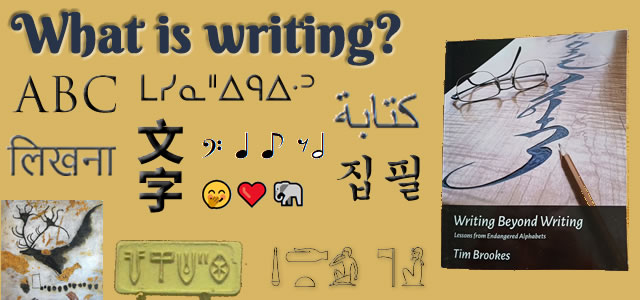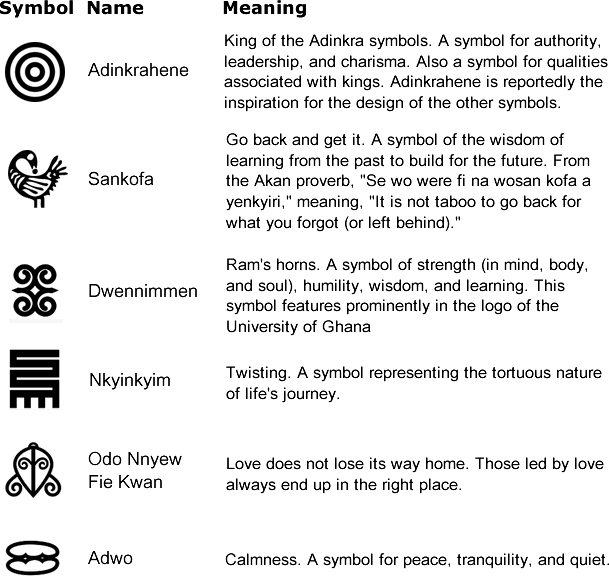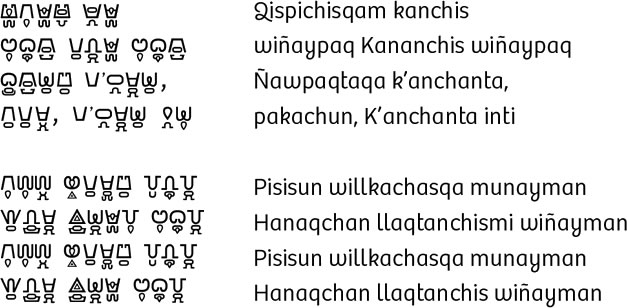
Yesterday I finished reading Tim Brookes’ new book, Writing Beyond Writing – Lessons from Endangered Alphabets, which I found very interesting and would throughly recommend to anybody who is interesting in writing systems and language.
One of the questions asked in the book is ‘What is writing?’
According to the Merriam-Webster Dictionary, writing is
‘letters or characters that serve as visible signs of ideas, words, or symbols’.
According to the The Free Dictionary, writing is:
‘a group of letters or symbols written or marked on a surface as a means of communicating ideas by making each symbol stand for an idea, concept, or thing, by using each symbol to represent a set of sounds grouped into syllables (syllabic writing), or by regarding each symbol as corresponding roughly or exactly to each of the sounds in the language (alphabetic writing).’
Other definitions are available.
Writing systems are generally thought to be ways to represent the sounds and words of language in various ways. However, there are forms of graphic communication that don’t represent sounds or words, but rather ideas, emotions, music, mathematics, time, etc.
In his book, Tim Brookes suggests that these graphical forms could be thought of as forms of writing, and that letters and other symbols from writing systems can be used in decorative, ritualistic and other ways where representing a particular sound or word is not their main purpose.
For example, there is a collection of symbols known as Adinkra which originated with the Gyaman people of Ghana and Côte d’Ivoire, and which were originally printed onto clothes worn by royalty at important ceremonies. They now appear on clothes, furniture, sculptures and in various other places, and are used as logos.
Each symbol may have a variety of meanings. Here are some examples:

Source: Adinkra Symbols & Meanings
See also: https://www.adinkraalphabet.com/adinkra-symbols/
An alphabet based on these symbols, called Adinkra, was recently created by Charles M. Korankye.
See also: https://www.adinkraalphabet.com/
One writing system mentioned in the book is the Silabario Amazónico, which was created in 2016 by Juan Casco, a graphic designer, typographer and visual artist from Ecuador. It is based on graphic symbols used in South America and can be used to write indigenous Amazonian and Andean languages, such as Kichwa, Waorani, and Aymara.
It looks like this:

Source: https://www.behance.net/gallery/79435301/Silabario-Amazonico
I’ve put together a page about it on Omniglot, and have contacted Juan Casco to check if he’s okay with me doing so. It’s not public yet, but you can see it at: https://www.omniglot.com/conscripts/silam.htm.
By the way, Tim Brookes’ Endangered Alphabets Project was inspired by Omniglot. See also the Atlas of Endangered Alphabets.
Thanks so much, Simon. Yes, the inspiration for the Endangered Alphabets Project absolutely was Omniglot–in fact, I tell that story in the opening chapter of Writing Beyond Writing. Omniglot was paying serious and detailed attention to writing systems at a time when they were scorched earth in academia. Even today I know of only one person in the world who is in higher education and researches and teaches about writing from a script point of view. No coincidence that he is in Sikkim, India, which has more official scripts than any other political entity in the world, as far as I know. So Omniglot was paving the way, especially way back in 2009. Also: watch out for the inauguration of World Endangered Writing Day, coming up on January 23, 2024.
One last thought. The official publication date for Writing Beyond Writing is January 23rd, World Endangered Writing Day, but I have a few pre-release copies for sale at https://www.endangeredalphabets.com/writing-beyond-writing/ . Just saying.